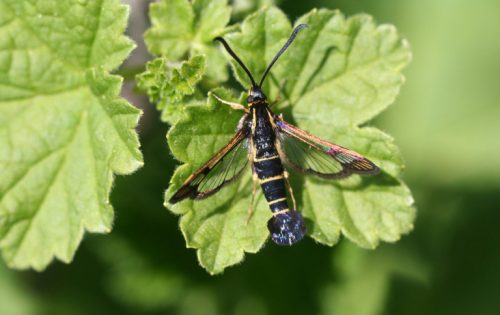The currant clearwing belongs to the family of clearwing moths.
Currant clearwing (Synanthedon tipuliformis), is a moth of the family clearwing moths (Sesiidae). Its wingspan varies between 17 to 20 mm. The currant clearwing measures + 14 mm and is steel blue-black in color, with translucent wings with black edges. The clearwing moth can be seen from late May to late July, especially during periods of high temperatures. The currant clearwing is native to Europe, but is not often observed – while it is a common moth. The currant clearwing can cause serious damage by drilling tunnels in the longitudinal direction of perennial branches. In these tunnels, the larvae (caterpillars) overwinter to pupate into butterflies in the spring.
Ribes is the host plant of the currant clearwing, sometimes euonymus. The larvae (caterpillars) live off the bark and wood of plants.
Where to find
- Ribes
- Currants
- Gooseberry
- Eunymus
Control
Difficult to to control because the currant clearwing doesn’t show up much and the caterpillars hide in the branches. Prune and destroy affected branches.
Prevention
Provide a bird-friendly environment: birds eat insects including clearwing moths. Regular rejuvenation pruning helps prevent infestation.

